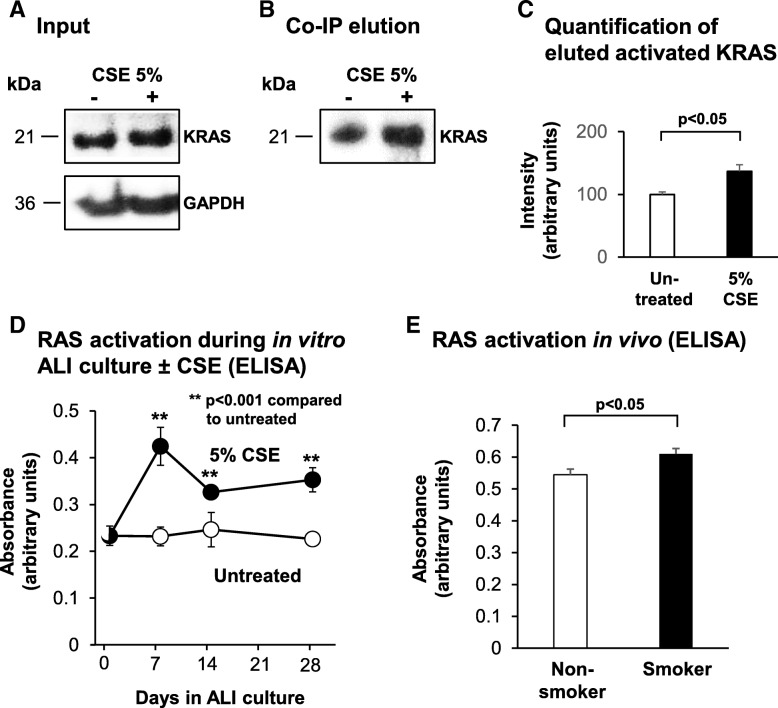Fig. 6.
Effect of cigarette smoke exposure on KRAS and RAS protein family activation in the airway epithelium. a-c. Basal cells (BC) were cultured in the absence or presence of 5% cigarette smoke extract (CSE) under non-differentiating culture conditions. Forty-eight hr. post-CSE exposure, the cells were lysed and the activated form of GTP-bound KRAS quantified by co-immunoprecipitation (Co-IP). a Western analysis of KRAS and GAPDH (loading control) levels in cell lysates. b Western analysis of activated KRAS levels elution lysates following Co-IP. c Quantification of activated KRAS levels. Bars indicate intensity of signal obtained in during image analysis. Error bars indicate standard error of the mean. Data from n = 3 independent experiments, each performed with independent donors of BC. d Basal cells were cultured on ALI for 28 days in the absence and presence of 5% CSE and harvested at multiple time points to quantify RAS protein family activation by ELISA. Bars indicate mean absorbance levels. Error bars indicate standard error of the mean. Data from n = 3 independent experiments, each performed in triplicate with independent donors of BC. e Airway epithelium from healthy nonsmokers (n = 5) and asymptomatic healthy smokers (n = 5) were obtained via bronchoscopic brushing and the levels of RAS protein family activation quantified by ELISA. Bars indicate mean absorbance levels. Error bars indicate standard error of the mean. T tests were used to determine the statistical significance of differences observed in two-way comparisons. Statistical analysis of data in the time course utilized a repeated measures ANOVA as described in the Methods

